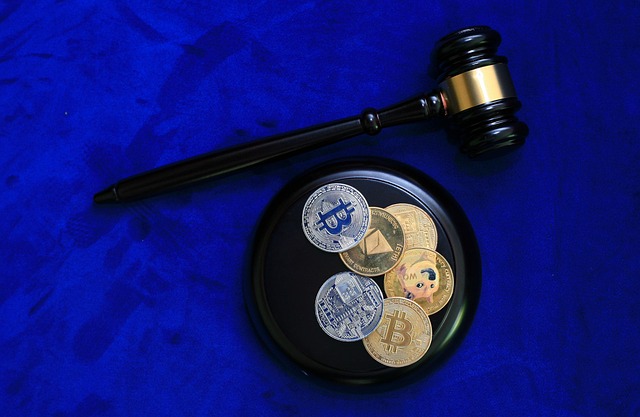Crypto Wallets: Your Comprehensive Guide to Secure Cryptocurrency Management
Author: Jameson Richman Expert
Published On: 2025-05-15
Prepared by Jameson Richman and our team of experts with over a decade of experience in cryptocurrency and digital asset analysis. Learn more about us.
In the fast-paced and often volatile world of cryptocurrencies, having a reliable and secure crypto wallet is paramount. As the digital currency market continues to grow, the importance of choosing the right wallet cannot be overstated. This article will explore the various types of crypto wallets, the critical factors to consider when selecting one, and my personal experiences navigating this complex landscape, complete with practical tips to enhance your cryptocurrency storage strategy.

Understanding Crypto Wallets
Crypto wallets are digital tools that allow users to store, send, and receive cryptocurrencies. Unlike traditional wallets that hold physical currency, crypto wallets do not store currency in a physical form. Instead, they store the public and private keys necessary for conducting transactions on a blockchain. These wallets can be broadly categorized into two types: hot wallets (online) and cold wallets (offline). Understanding the fundamental differences between these wallet types is essential for any investor looking to secure their assets effectively.
Types of Crypto Wallets
- Hot Wallets: These wallets are connected to the internet and are ideal for frequent transactions. They are user-friendly and accessible, making them a popular choice for trading. Examples include online wallets provided by exchanges like Binance and Bybit. However, users should be cautious about storing large amounts of cryptocurrency in hot wallets due to potential vulnerabilities to hacking. It's crucial to implement additional security measures, such as enabling two-factor authentication (2FA) and using strong, unique passwords.
- Cold Wallets: Cold wallets are offline storage solutions that provide an extra layer of security. Hardware wallets, such as Ledger and Trezor, fall into this category. These wallets are less vulnerable to hacks and are recommended for holding larger amounts of cryptocurrency. They often come with additional features such as secure chip technology and two-factor authentication to further enhance security. Cold wallets are ideal for long-term investors who prefer to keep their assets secure and offline, away from potential online threats.
- Paper Wallets: A form of cold storage, paper wallets involve printing your private and public keys on paper. While they are secure from online threats, they can be easily lost or damaged, making them less practical for everyday use. Proper storage methods, such as using a safe or fireproof box, can mitigate some risks associated with paper wallets. Additionally, it’s essential to ensure that the paper wallet is created in a secure environment to avoid exposure to malware or phishing attacks.
The Importance of Choosing the Right Crypto Wallet
My journey into cryptocurrency began with immense excitement when I purchased my first Bitcoin. However, this excitement was quickly overshadowed by confusion about where to securely store my investment. I experimented with several wallet types, each providing unique lessons about security, accessibility, and reliability. For instance, I once lost access to my funds because I neglected to back up my wallet properly. This experience highlighted the necessity of prioritizing security and convenience when selecting a crypto wallet. Understanding the balance between accessibility and security is crucial, especially for new investors.
My Wallet Experiences
As I explored various options, I came across some of the most recommended wallets in the crypto community. Initially hesitant about investing in a hardware wallet due to their costs, I soon realized that their security features were worth the investment after experiencing a loss of access to my funds. Hardware wallets like Ledger and Trezor offer robust protection against online threats and are ideal for long-term storage, especially for those who plan to hold cryptocurrencies for an extended period. Furthermore, many hardware wallets support multiple cryptocurrencies, which can simplify asset management.
While online wallets, such as those offered by Binance and Bybit, are convenient for trading, I learned the hard way about the risks involved in storing large amounts of cryptocurrency on exchanges. These platforms can be susceptible to hacking, as evidenced by numerous high-profile breaches where users lost significant amounts of money overnight. This experience taught me to keep only what I needed for trading on exchanges while securing the majority of my assets in a hardware wallet. Additionally, I learned to use reputable exchanges with robust security measures in place, such as cold storage for their customers' assets and insurance policies against breaches.
Another platform I explored was MEXC, which provided a user-friendly interface for managing my crypto assets. However, I quickly learned that even user-friendly platforms can experience downtime or technical glitches, emphasizing the importance of diversifying storage solutions and not relying solely on one service. Utilizing multiple wallets can help mitigate risks and provide better accessibility when trading. It's also prudent to regularly review the security protocols of the platforms and wallets I use to ensure they remain up to date with industry standards.
Backup and Recovery: Non-Negotiable Practices
As I continued my cryptocurrency education, the significance of backup and recovery options became clear. Setting up my hardware wallet for the first time was overwhelming, particularly with the recovery phrase. Initially, I underestimated its importance, but I soon learned that this phrase is crucial for accessing my funds. Losing it could mean losing my entire crypto portfolio. This experience reinforced the need for diligence in managing recovery information. I recommend writing down the recovery phrase and storing it in a secure location, separate from the wallet itself, to avoid potential loss. Moreover, consider using a password manager to store sensitive information securely.

Learning from Resources and Guides
In my quest for knowledge, I stumbled upon numerous guides and articles that enriched my understanding of crypto wallets. One standout resource was the Ultimate Guide to Crypto Wallets, which provided a comprehensive breakdown of the different wallet types, their pros and cons, and tips for choosing the right one. This resource helped solidify my understanding of how each wallet works and the best practices for using them effectively. I encourage new investors to seek out educational materials from reputable sources to gain a thorough understanding of the crypto landscape.
Additionally, I learned about the benefits of using trading bots with wallets. The Mastering Binance Trading Bots guide offered insights into how automated trading can enhance my investment strategy. After experimenting with trading bots, I found that they helped me capitalize on market fluctuations more effectively, allowing me to optimize my trading performance while maintaining a secure wallet setup. However, it’s vital to choose reputable trading bots and remain vigilant about the risks associated with automated trading.
Staying Updated with Security Practices
The cryptocurrency landscape is continuously evolving, and so are the threats to asset security. I realized the importance of staying updated on the latest security practices to safeguard my investments. The Ultimate Binance Bot Guide not only provided valuable trading strategies but also highlighted essential security measures to protect my accounts and wallets from potential threats. Engaging with the crypto community through forums and social media platforms has also kept me informed about emerging risks and recommended security protocols. It’s crucial to remain proactive in my security practices, as new vulnerabilities can arise at any time.
Conclusion: A Journey of Learning and Growth
Reflecting on my journey through the world of crypto wallets, I acknowledge the numerous ups and downs that have shaped my understanding of effective cryptocurrency management. The experiences I've had, both positive and negative, underscore the importance of choosing a wallet that aligns with your individual needs and staying informed about security practices. I hope that my journey and the resources I've shared will serve as a valuable guide for others looking to navigate the complexities of cryptocurrency investment. Investing in cryptocurrencies can be immensely rewarding, but it requires diligence, ongoing education, and informed decision-making to truly succeed in this dynamic market.

Additional Considerations for Crypto Wallet Users
As the cryptocurrency landscape continues to evolve, there are additional considerations that every crypto wallet user should keep in mind:
- Multi-signature Wallets: These wallets require multiple private keys to authorize a transaction, enhancing security. This can be beneficial for organizations or individuals with significant investments who want to minimize the risk of theft or loss.
- Regulatory Compliance: As governments around the world begin to implement regulations surrounding cryptocurrencies, it is essential to choose wallets and exchanges that comply with local laws to avoid potential legal issues.
- Integration with Decentralized Finance (DeFi): Many crypto wallets now offer integration with DeFi platforms, allowing users to lend, borrow, or earn interest on their cryptocurrencies. Familiarizing oneself with these features can unlock additional investment opportunities.
- Community and Support: Opt for wallets that provide robust customer support and have an active community. This can be invaluable in resolving issues or learning about best practices.
Ultimately, the journey into cryptocurrency management is unique for everyone. By arming yourself with knowledge, leveraging the right tools, and maintaining a proactive approach to security, you can navigate this exciting yet complex landscape effectively. Happy investing!